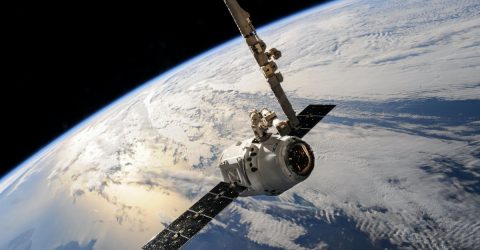Amazon to launch satellites into space!
Amazon is investing billions in a space program to rival SpaceX.

To boldly go…
Last week, Amazon boss Jeff Bezos, confirmed they are to invest $10 billion (around £7 billion) in a space program. The project will consist of almost 3500 satellites orbiting Earth. This amount of satellites would rival current satellite systems in place operated by SpaceX and OneWeb.
The satellites will be positioned in a Low Earth Orbit (LEO) above us. The purpose of these satellites is to provide ultrafast satellite broadband to areas with the lowest connectivity around the world.
The project working on launching the satellites is called Project Kuiper.
The final frontier.
The American communications regulatory body (like our Ofcom), the Federal Communications Commission (FCC) have given Amazon permission to launch. Ground control to Major Bezos.
Amazon says they aim to have at least half of the ‘constellation’ launched by the end of 2026. They anticipate the entire system to be launched by 2029.
It’s unlikely they will be able to provide a decent service until at least 2027. Amazon estimates that it will need nearly 600 satellites launched to provide a minimal service.
Space, man.
An LEO satellite is named so because it orbits much closer to earth than a GSO (Geosynchronous orbit) satellite. Amazon’s LEO satellites will be orbiting around 600km above Earth. A large GSO satellite generally orbits around 35,000km above us. GSO satellites are often used as communication arrays, the first one was launched in 1964.
GSO satellites are much bigger, some weigh a tonne or more. Whereas Amazon’s LEO satellites are said to be around the size of a person.
How is it used?
Even though you don’t hear about it, there are thousands of satellites in space. Since Russia launched Sputnik in 1957, around 8,378 satellites have been sent to space.
Many of these are used as communication boosters or links for industries like shipping, to track boats. They are also often used for military purposes.
With so many satellites in orbit you might think it’s getting a bit crowded up there! So to avoid the risk of “space junk“, each LEO will only stay up for a few years before being deorbited.
Satellite broadband is often used in rural areas where a fixed line installation isn’t viable. Satellite broadband uses a satellite dish on Earth to receive broadband from satellites above. It was once considered a last resort, but now download speeds of up to 30 Mbps are available.
Rocket man.
Jeff Bezos also owns a rocket company (yes, that’s a real thing now!). The company, called Blue Origin, creates relaunchable rockets with the aim of reducing the cost of space travel. So it will probably be used to launch the constellation of satellites.
We are doing an incredible amount of invention to deliver fast, reliable broadband at a price that makes sense for customers. LEO-based broadband systems like Project Kuiper present a huge number of challenges…we have assembled a world-class team, committed to delivering on our vision for Project Kuiper.
Combine that with Amazon’s deep expertise in networking and infrastructure and its ability to finance such a huge undertaking, and I am optimistic about the impact we can have for these unserved and underserved communities.






